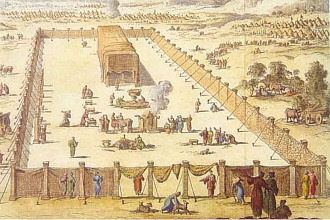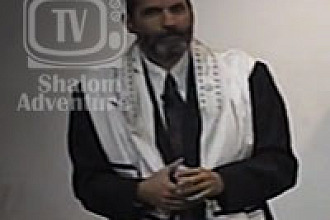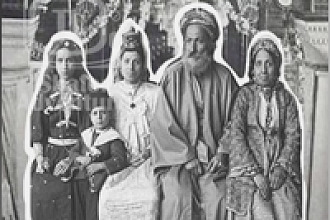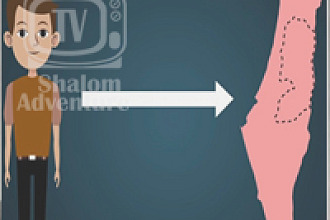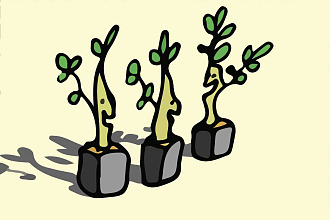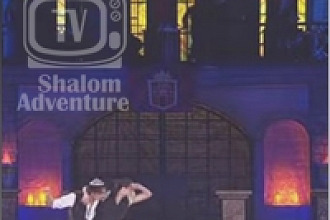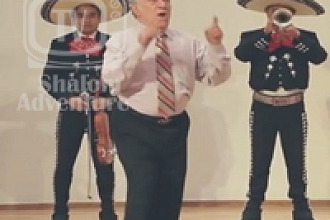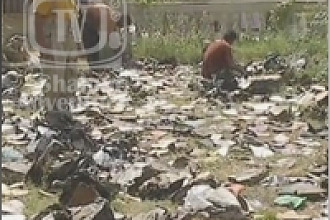A deep love of his country, a desire for his native Italy to be freed from foreign rule and unified, and death of fellow composer Gioachino Rossini (who he was never actually good friends with but still believed his death to be a national tragedy) motivated Giuseppe Verdi to compose his Requiem Mass.
The piece is approximately 95 minutes in duration with seven movements: Kyrie Eleison (Lord, have mercy), Dies Irae (day of wrath), Domine Jesu Christe (Lord Jesus Christ), Sanctus (holy, holy, holy), Angus Dei (Lamb of God), Lux Aeterna (light eternal), and libera me (deliver me). Many performances were held throughout Europe in the last half of 19th century, but one surprising venue for the “defiant requiem” would take place at the Terezin/Theresienstadt ghetto and concentration camp, originally a holiday resort for Czech nobility and later a military fortress, approximately 30 miles north of Prague, Czechoslovakia.
Terezin was not an extermination camp so much as a cross between a ghetto and labor camp, but was unusual in that most of the prisoners (mostly from Czechoslovakia, as well as Germany, Austria, Denmark, and Holland) were scholars, scientists some internationally renowned, artists, actors, philosophers, musicians, rabbis, and other highly educated Jews. The prisoners worked 10-12 hour days, but after work, would gather together to discuss philosophy and religion, draw, sing, write, or play music together. In 1943, an imprisoned composer later to be exterminated at Auschwitz gathered 150 vocalists in a dark basement to learn a single score of Verdi’s Requiem he somehow stumbled across. All the musicians learned their parts by rote memory with only a legless piano for an accompanist. Sixteen performances were held within six months for other prisoners as well as SS officers, though vocalists had to be replenished throughout the six months as prisoners were regularly deported primarily to Auschwitz and Treblinka.
After a deportation of Danish Jews to Terezin, King Christian X of Denmark inquired of the Nazis on the wellbeing of the Danish citizens interned in the camp. The Nazis decided to pull a propaganda stunt and allow both the International Red Cross (with Swiss representatives) and the Danish Red Cross to view the operations at Terezin in hopes of dispelling international rumors about the extermination camps. The Nazis enacted Operation Embellishment: they deported several thousand to Auschwitz to alleviate overcrowding, planted trees and flowers, built shops, pavilions, and cafes, painted walls, and cleaned up the grounds.
The musicians were granted an opportunity to do a musical performance for the Red Cross inspection to give the illusion of a well maintained operation, a model internment camp, and rich cultural life in the camp. They seized the opportunity hoping the Red Cross would understand the message in the song, discern their plight and despair, and ultimately rescue and liberate them. Unfortunately the Red Cross failed to hear the message the Jews were hoping to impart, and saw what the Nazis wanted them to see: Jews gathered having a good time playing music together in a well maintained settlement in the middle of Czechoslovakia. Adolf Eichmann, who hosted the Red Cross inspection, can be quoted as saying, “Those crazy Jews, singing their own requiem.”
The Nazis also permitted a jazz concert in the pavilion and children’s musical performances during the inspection despite jazz and swing music not being allowed in Germany. Normal operations and deportations resumed once the inspection was complete. There was a second Red Cross inspection in 1945, and again, Eichmann was able to fool the inspectors. Over 88,000 Jews were ultimately deported from Terezin to Auschwitz and Treblinka over the course of the war, and a typhus epidemic immediately prior to liberation of the camp in 1945 claimed more lives, primarily the elderly and children as most able bodied workers had already been deported by this time.
As one survivor said, “We sang to the Nazis what we could not say to them. These performances allowed the performers and the audiences to immerse themselves into a world of art and happiness, forget the reality of ghetto life and deportations, and gather the strength to better cope with the loss of freedom.”
Reference:
Florida Orchestra Performance in collaboration with the Florida Holocaust Museum, Clearwater, FL, 22 April 2018
Picture originally found here






